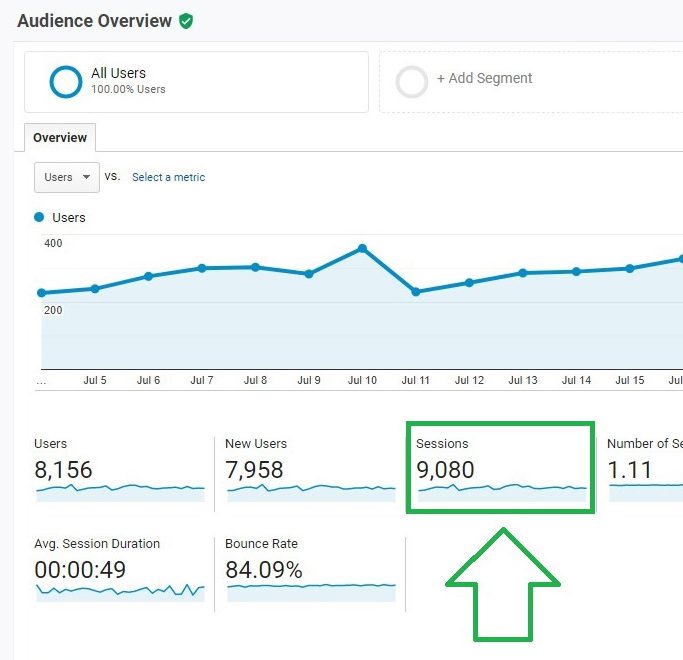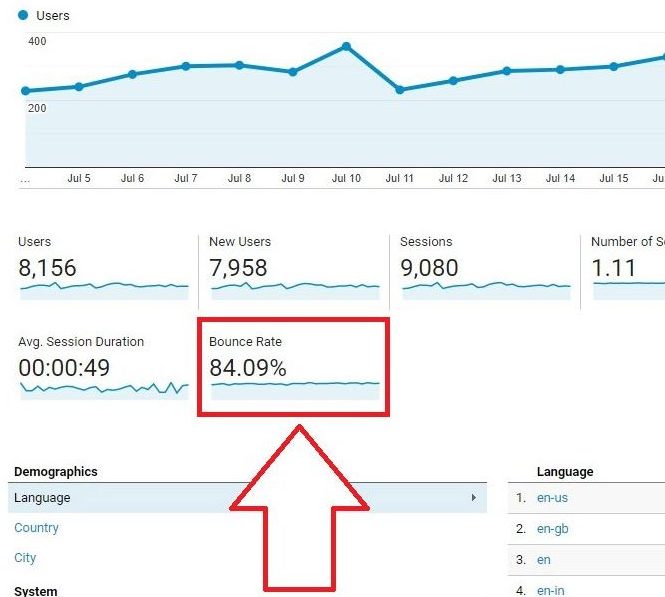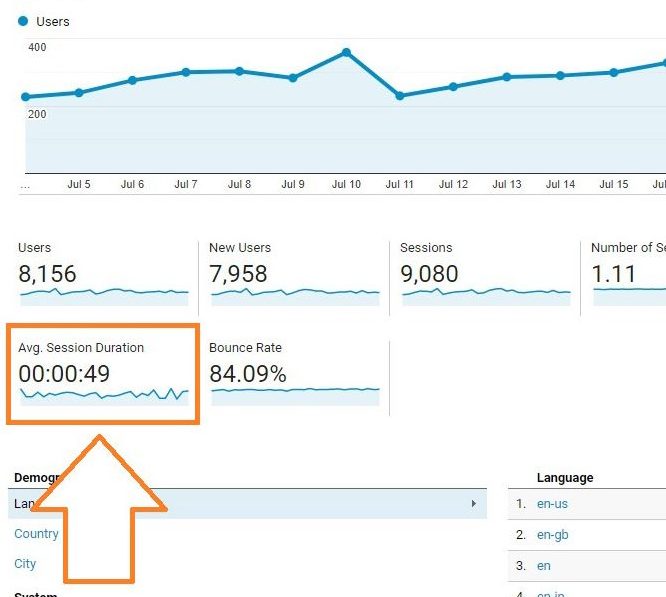Contents
What are Search KPIs and which ones should website owners know about?
After putting in the countless hours it takes to design a beautiful website, blog post, campaign, etc., you might feel compelled to post it and watch how it performs. To track the sucesss here are some analytics to truly measure.
Search KPIs, or key performance indicators, are metrics (method/numbers for measuring something) that are used to demonstrate how successful an action is. There are various ways to track search KPIs, whether it’s a simple measure of how many people visit a page (Google Analytics) or keyword rankings (Ahrefs, SEMrush, etc).
Here are eight of the most valuable search KPIs to track and example programs you can use to find them.
The first five that we will go over can all be found in Google Analytics:
(Google Analytics > Audience > Overview)

1. Organic Sessions
Organic sessions measure the number of clicks a website gets, and is one of the most essential search KPIs to pay attention to.
Each time a person visits a website, takes an action on the website while visiting, and then exits, it counts as a session. A single user can provide multiple sessions, depending on how long they spend on the site and what actions they take. However, if a user idles on a website for 30 minutes or more, their session will be timed out due to inactivity and will not count as traffic.
Users can use Google Analytics to measure sessions directly or use other reporting tools to measure analytics such as Agency Analytics. The latter helps more with cross-referencing with other measures of data.
Expected click-through-rate (CTR) increases with every single position on the search engine results page. Jumping from 3rd to 2nd on page 1 can result in a spike in organic sessions, not to mention if you’re able to jump from page 2 to page 1 of the results for a high volume keyword.
You can help spur more organic sessions by crafting a compelling, relevant page title and writing a meta description with a clear, enticing call-to-action.
2. Duration per Session
This KPI is important because it allows the creator to measure how long a person is engaged with the content. If the content is long and in-depth, expect longer sessions. However, it should not be too long because the users want to get straight to the point.
This is the best way to critically adjust the content so that the users stay for the allotted time required.
Another important aspect of these sessions is how long users are staying on a certain page and how many they visit. If it’s a content-heavy site that intends to inform the user with multiple pages, dividing the amount of time spent on each page is crucial for SEO. This way, it informs the creator of how far the users will read and what may need to be condensed.
3. Bounce rate

Bounce rate is a popular metric used analytically for website tracking and marketing efforts. It tracks the percentage of users who load the page then immediately exit without taking any action.
About half of the average sessions do not have any interaction, with about 40 to 60% being the typical bounce rate. However, this does vary based on the audience a creator is attracting and the content.
The reasons for bounce rates may be because the keyword searched did not exactly match the first search result, it is not easy to navigate, or the user is questioning its trustworthiness/reliability. It is important to ensure the keywords are accurate to the website and included. Also, the website should be well-organized and visually appealing and is not something the intended audience would want to turn away from.
4. Exit pages
Users use exit pages for positive gains for the creator, such as exiting a payment confirmation or thank you page, so it is not always a negative to see high exit rates. However, it is important to track where users are exiting from. Exiting from the first page is typically a bad sign that they did not want to stay very long to see the content.
CRO/UX improvements can fix this. To access the exit rate information, use Google Analytics by choosing Behavior Reports > Site Content > Exit Pages. After that, content makers can access the number of raw exits that are taking place on the page.
5. Page load time
No one likes a long wait for a page to load. Long wait times can influence a heavy bounce rate, influencing the user to move on to the next search result. If a site is very slow to load, users are less likely to even look at the other results.
Tools, such as GTMetrix, give you insight on how long it is taking for pages to load. It also represents any underlying issues that could be causing this problem. Additionally, optimizations made to the servers, codes, images, and content can prevent excessive load times.
6. Increase in keyword rankings
If a person searches for a certain keyword that a website ranks for. Therefore, keywords are crucial to tracking the production of a website as they hold a majority of the power that controls the results page.
Keyword ranking is an essential KPI because it is a much more accurate way of tracking long term website SEO success. Traffic can change just based on trends in your industry or the world in general. “Black Friday” is a keyword that gets lots of traffic in Q3 and Q4 of the year before the shopping season, and then gets a lot less traffic in Q1 and Q2 comparatively. Wedding season is another good example of a keyword that gets a lot of traffic before May and up to October (78% of all weddings take place between May to October) and then drops off in popularity afterward. Just because your wedding business sees less traffic in November in December does not necessarily mean you are losing SEO.
Some ways to track it are with tools such as Ahrefs (our favorite), SEMrush, or SE Ranking. These tools help track long-term visibility that results from keywords. We’ve blogged on multiple ways to do keyword research yourself without tools like these which can be expensive for beginners.

7. Conversions and leads
Once other search KPIs have been implemented, it’s important to track action once users land on the site.
Some examples of leads could be a:
- Newsletter signup
- Subscription
- Registration to an event or webinar
- Completed sale or purchase
- Submitted contact form requesting more information
To improve results for conversions and leads, be sure to focus on conversion rate optimization (CRO). To create a website that converts, be sure to ask the following questions:
- Can users easily navigate the website?
- Am I clear about the actions I want from the user?
- Is the content trustworthy and clear?
- Can users easily take action?
8. Crawl Errors
If a site has crawl errors, it means Googlebot is having issues accessing the site and reading the necessary content. When a crawl error occurs, it essentially means that a search engine is attempting to access a website, but fails. If the message “ERROR 404 ERROR PAGE (NOT FOUND)” appears on a page, it means that the site has crawl errors and the users can not access it.
To fix a crawl error, take immediate action and test the crawl ability of a page by using the “Fetch as Google” tool in Search Console and select the “fetch and render” option.




